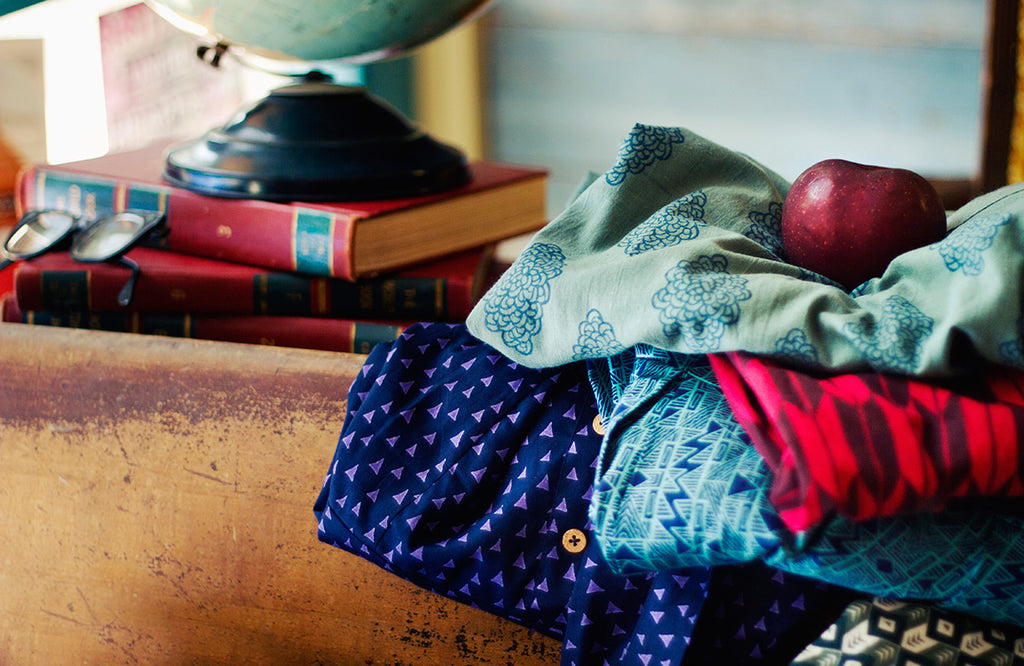On the first day of the year, alongside buzzing champagne hangovers and already-fizzling new year’s resolutions, millions of viewers tuned in to eight episodes of the highly anticipated TV show, Tidying Up with Marie Kondo. Eight years after the release of her popular book (selling over 11 million copies!) The Life Changing Magic of Tidying Up, Kondo brings her KonMari method to cluttered households. With Kondo’s guidance, participants pile their clothing on their beds, holding each and every garment, and ask themselves, “Does this spark joy?” Only items that prompt a “Yes” can remain in their closet.
Those on the show aren’t the only ones disposing of garbage bags upon garbage bags of clothing – viewers are utilizing the KonMari method, too (even the Mata team!). But when the process is complete, it’s hard not to pile on the guilt seeing bags of clothes in front of you, feeling like your decluttering is only contributing to a landfill. As ethical consumers, how do we rid ourselves of pounds of poor style decisions responsibly?

6 Tips for Tidying Up Responsibly
1. Sell it
ThredUp or Poshmark are great options if you know your cleanout pile contains some gems.
- ThredUp sends you a bag to fill and return, then photographs and lists any items online worth selling. Expect a small portion of the sale in ThredUp credit or cash.
- Poshmark is another online marketplace for new and used clothes and accessories, except you are responsible for photographing, listing, and shipping your items (but you make a little more money as a result)!
2. Host a clothing swap
Inspire you friends and colleagues to jump on the tidying-up-train. Invite them over for a “Sip & Swap.” They can bring their friends. The more, the merrier, and more pieces to shop! Each person brings clothes they’re no longer loving and swaps them for pieces they do. You’ll play fashion matchmaker and get cool clothes out of the deal. When it’s done, take it to a recycling center.
3. Donate to resale shops or other organizations
Thrift and resale shops like Goodwill, Salvation Army, and others, are accepting the bulk of people’s closet cleanouts. A week after the show was released, Goodwill stores in the Washington, D.C. area reported a 66 percent increase in donations and noted a 10-20 percent increase in donations nationwide. But, while we often assume the clothing we donate is finding a new home locally, a large portion of it is sent to other countries. According to the Council for Textile Recycling, 80-90% of donations to charities are sold to recyclers – about half of that is exported to foreign countries to be reused while the other half is actually recycled.
Or, here are a couple organizations that will give your used items a second life:
- Free the Girls accepts used bras and provides economic opportunity for women in developing countries
- Dress for Success provides a network of support, professional attire, and development tools to help women thrive at work and in life
4. Repair it
Extend the life of your clothing by trying one of these options:
- Worn Wear is Patagonia’s program that repairs and recycles used outdoor wear and gear
- Community Glue, here in Chicago, is a volunteer-based monthly repair workshop, where household items and clothing can be fixed or mended. Do some research in your own community to find any similar workshops.
5. Cut it up
Needing lint-free rags for staining furniture or doing a deep clean come spring? Those old tees will do wonders when cut up and turned into a rag stash.
6. Recycle
Eighty-five percent of used textiles end up in landfills, when 95 percent could be recycled.
Find a recycler for your specific unwanted items - Blue Jeans Go Green turns old denim into insulation.
Or, drop off your clothing at a textile recycler bin. Find them easily from any of these companies:
Thinking about “Tidying Up” your own closet? Find a new home for your unwanted clothes and cleanse your clutter without the guilt.
